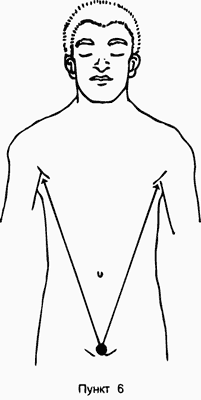This week we will continue the lesson we started last week and related to the heart center, with which you have already done a lot of work. You will learn exercises that establish energetic balance in the upper chest and back, including the axillary area.
As you complete the exercises, you will feel significant changes occurring in your body. Quadruple breathing allows you to fill with energy the organs, muscles, tendons, bones, ligaments, blood vessels and all hollow spaces inside the human body. There are many voids of this kind in our body, which Taoists call “cavities.” By practicing the quadruple breathing exercise, you will learn to fill the voids.
To understand the purpose of the exercise, it is enough to draw an analogy with a balloon, the shell of which has partially lost its air supply and needs to be pumped up. In our case, the role of “air” is played by qi. Pumping air increases the pressure inside the ball, filling the cavities with energy (qi) eliminates the voids.
We would like to warn you not to exert too much effort while performing this exercise. Over time, having mastered the basic abdominal breathing exercises, you can concentrate almost instantly, which will allow the “perineal power” to effortlessly penetrate anywhere in the body.
If you succeed in this (and I see no reason why you should not), you will be able to realize how far you have come since you opened the first page of my book. Managing energy flows and directing them to any part of the body is not so difficult. All that is required is breath control and the ability to focus on specific points. Perhaps some of you will remember that he was able to do this in childhood. However, no one taught you how to use your innate gift, and over time you forgot about this unique opportunity. But it's time to refresh your memory.

Compared to the exercises of parts 1-3, this week’s exercise differs in one feature. Previously I taught you how to direct perineal force to the front line points; then the vector of force shifts to the back, the force of the perineum is concentrated at a point on the spine.
This week, using the fourfold breath, we will raise energy to the heart and then direct it to the corresponding heart point on the spine (jia-pe). As you perform the exercise, you should feel your chest expanding in all four directions.
1. Inhale slowly using abdominal breathing, expanding your lower abdomen.
2. Take a shallow breath and direct the force of the anus and perineum (“perineal force”) into the center of the sternum. This is where the heart center (chakra) is located.
3. Take a shallow breath and direct the force of the perineum to the jia-pe point (on the spine, opposite the heart).
4. Take a shallow breath and pull the left anal muscles towards the left armpit. Lower your shoulder and imagine that you are holding an egg under your armpit. Feel how your armpit expands.
5. Take a shallow breath and pull the right anal muscles towards the right armpit. Lower your shoulder and imagine that you are holding an egg under your arm. Feel how your armpit expands.
6. Take a shallow breath and, with simultaneous force from the anus on the left and right sides, direct the “perineal force” to the left and right armpits, respectively. Feel them expanding.
7. Exhale slowly and hold your breath.
8. Relax and then repeat the exercise at least three times.

During the second week of training, you learned that excess energy is stored in armpit hair. This same energy fills the muscles, tendons and lymph nodes throughout the armpit area. By regularly practicing this exercise, you will soon find that all the painful symptoms you experience in this area gradually disappear.
The quadruple breathing exercise can be performed alternately, that is, inhaling and exhaling at each level, selectively and simultaneously (the first is the navel and belt; the second is the “palace of sperm” (ovaries) and thighs; the third is the solar plexus and the lower part of the chest; fourth - heart center and armpits). In the latter case, all stages are carried out in one go. While doing the exercise, do not strain yourself, but just take a few shallow breaths. If you feel difficulties, do not force things. With experience, you will find it increasingly easier to slow down and hold your breath.



